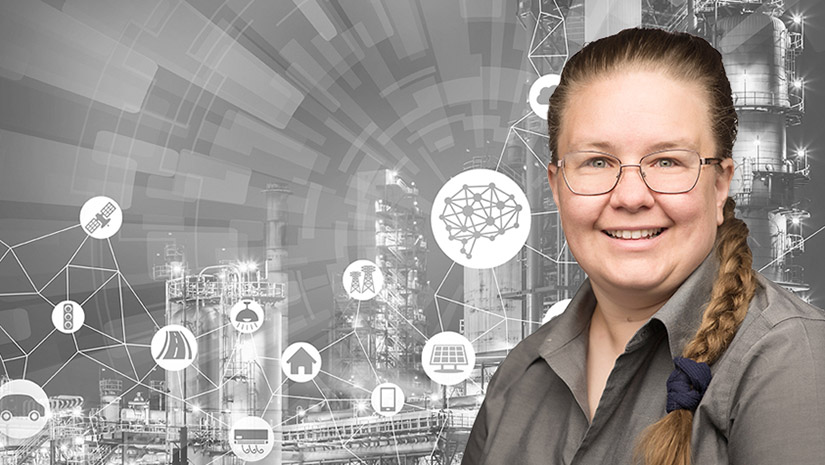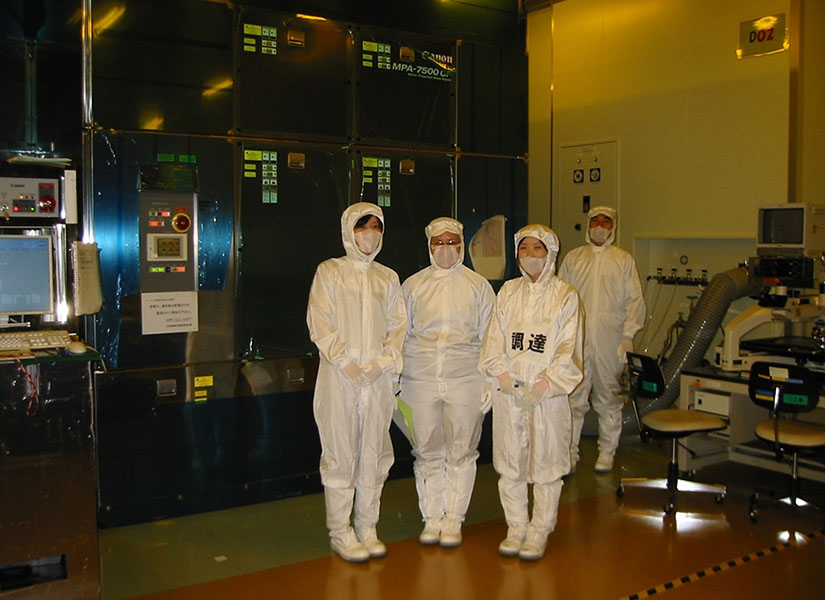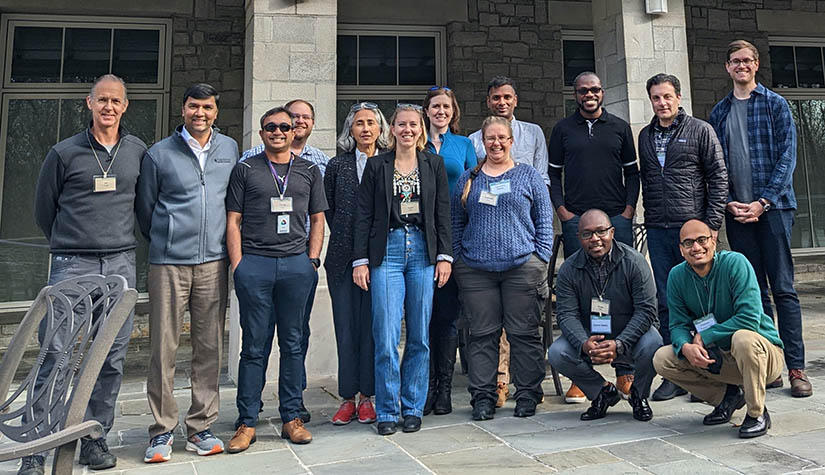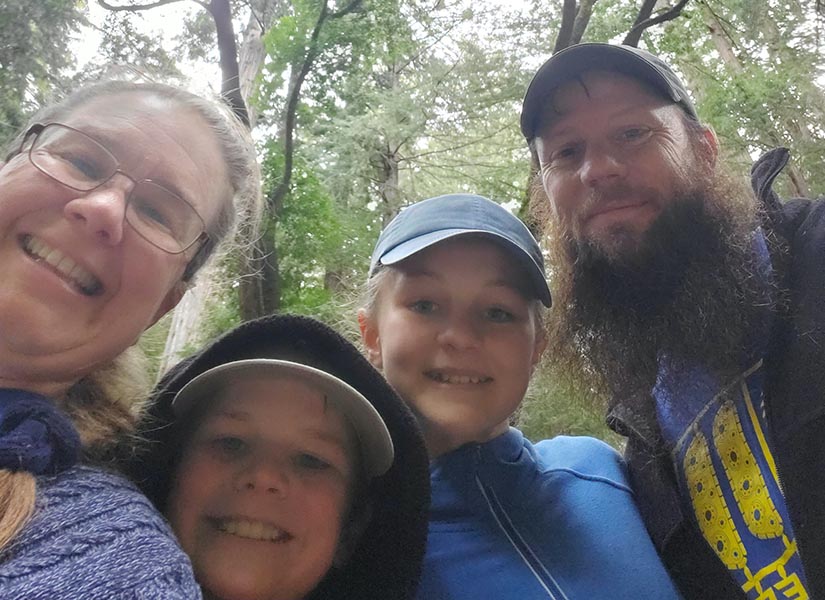Q&A With Samantha Reese: The Fix-It Engineer Who Digs Up Data To Fix the Planet
Manufacturing Masterminds Series

When Samantha (Sam) Reese moved from snowy Montana to bikini-clad Los Angeles, California, her classmates at the California Institute of Technology had one big question about her rural upbringing.
“Did you ride a horse to school?” they asked—more than once.
“No,” Reese would reply. “Did you?”
Reese grew up near Montana’s Glacier National Park. At that time, the blue-collar town was busy with timber and aluminum. (Today, it is a ritzy romp for ski bums, akin to Colorado’s Aspen or Vail.) Reese did not ride a horse to school—nor did she did grow up in the 1800s—but she did speed around on a snowmobile any chance she got.
“They are the biggest lemon machines ever,” Reese said. “They break incessantly. And you could only ride it if you could fix it.” So, she fixed it, along with anything else that broke.
But when Reese grew up and left home, she left that fix-it world and found one obsessed with replacement. As the country’s economy took off and prices dropped, most people chose to throw broken things away and buy new ones. But over time, that quick fix—which comes with fast and dirty manufacturing and swelling landfills—started to fracture the planet.
“Now, we’re like, ‘Let's save the Earth,’ and we’re going back to fix it,” Reese said.
Fixing things—like snowmobiles but also more amorphous beasts, such as manufacturing processes and global supply chains—happens to be Reese’s specialty. As a senior engineer and analyst at the U.S. Department of Energy's National Renewable Energy Laboratory (NREL), she puts clean energy in context, analyzing, for example, how to manufacture solar panels without emitting too much carbon, whether coal-dependent communities could make solar panels instead, and how much energy our internet superhighway might gobble up as we amass more data and screen time.
“Sometimes what we look at is unexciting,” Reese said. “But it’s really important to have the analytics.”
In NREL's latest Manufacturing Masterminds Q&A, Reese shares why Los Angeles was a bigger culture shock than Southeast Asia, how she is ensuring clean energy technologies are as clean as possible, and why she is sharing her “fix-it” mindset with her kids.
When you started college at the California Institute of Technology, what was it like moving from rural Montana to Los Angeles?
In some ways, I had more of a culture shock than some of the international students that come from metropolitan areas. I was like, ‘Oh my gosh, this is insane. People wear bikinis in December.’ Northwest Montana can be snowy from July to June.
After college, where did you go next?
I had to decide between graduate school and a job. I got a job because—I'm going to be honest—Ph.D.s didn’t pay then what they pay now, and I was really tired of being poor. So, I got a job working for a telecom company in the Bay Area. I was a product engineer, so I worked with engineers to transition products from research and development to manufacturing at our facilities in Malaysia and Thailand.

Wow! If Los Angeles was a culture shock, what was Southeast Asia like?
For me, there was such a stark difference from Montana to Los Angeles. Los Angeles was essentially foreign to me; it was a very hard transition. If you're an international student, there are structures in place to help you with the culture transition. I think we sometimes take for granted how diverse the United States can be. Transitioning from Los Angeles to Southeast Asia was not as shocking.
So, you traveled all around Asia, but you ended up going back to school for a graduate degree, right?
After a year or two, it became apparent that I was going to be limited if I didn't get an advanced degree, and I knew the longer I waited the harder it would be to go back. I went to Yale University for my master’s and got a job at a metrology company. I spent a lot of time in Japan and Korea and worked my way toward a master’s.
How did you end up at NREL, then?
When my now-husband finished his Ph.D., he wanted to come to NREL, so we moved to Colorado, and I got a job working for a data storage company. I was the fix-it engineer. When something broke, I’d go out in the field and fix it. I got to travel all over the world there. But it was not a very good job to have with kids. Handing over the baby to the husband and being like, "I'm gone for the next week," was not workable and made him very sad.
But the timing was perfect because NREL had just been awarded the Clean Energy Manufacturing Analysis Center, a virtual center focused on bottom-up cost modeling and clean energy manufacturing. They were looking for people from industry, so I applied, and here I am.
And you have been here eight years! What have you been up to?
I work on a broad spectrum of technology, from combustion engines to semiconductors. Most of my funding comes from what I now affectionately call "the artist formerly known as AMO" because the U.S. Department of Energy’s Advanced Manufacturing Office split into the Industrial Efficiency & Decarbonization Office and Advanced Materials & Manufacturing Technologies Office.
There’s one project I’m especially excited about where we looked at the embodied carbon (the total amount of carbon dioxide emitted through manufacturing) of two kinds of solar panels: silicon and cadmium telluride. We found that manufacturing cadmium telluride modules emits about half as much carbon as silicon modules. And if you manufacture modules in a natural-gas-rich grid, that’s two times less embodied carbon than a coal-rich grid.
Wow. That is a huge difference.
But we took it a step further and put this in terms of the carbon budget, the total remaining carbon that we can generate to avoid going 2 more degrees Celsius in warming. To meet our decarbonization goals, experts believe we need to deploy 75 terawatts of solar panels by 2050. If we were to make those 75 terawatts using a coal-rich grid and silicon technology, we would consume 17% of our remaining carbon budget. Now, that’s not to say we shouldn’t do silicon. It shows that decarbonizing our manufacturing grid is very important and further research could help us lower the embodied carbon of solar panels. Green technology is amazing and awesome, but you also need to decarbonize it.

It sounds like you are focused more on the practical side of clean energy tech.
Yes, I’m 100% practical. NREL has been moving more and more toward practical deployment, which presents challenges when we try to publish. It’s almost too practical for a lot of journals.
You would think the practical side, looking at how to make our goals happen, would be a core part of this work.
Right. The U.S. Department of Energy’s manufacturing offices have always operated in this weird space where they're neither pure research nor pure deployment. They’re trying to bridge that gap.
Can you share a few more examples of this gap-bridging kind of work?
We recently learned that glass, a big part of solar panels, is a huge piece of our carbon footprint. We’re looking at the internet superhighway—not data centers or personal devices, because those are very well-understood, but how much energy do you need for the highway between the two? There’s work on the supply-chain world of stuff, like microchips; we feel like people are overlooking resistors, which cost about four-thousandths of a penny. But without a resistor, a $200 microchip doesn’t work. And we’re trying to build an electric airplane engine. How cool is that? Can you imagine all-electric, silent airplanes?
In the United States, it seems like many folks do not often think much about manufacturing—how they get all their stuff.
We don't. But about March 2020, my work became very popular. When people go to the grocery store to get their cereal or eggs and they’re not available, they start to think about supply chains a lot more.
It is kind of a bummer that it takes a major crisis, like goods shortages or climate change, to get folks to pay attention.
Maybe. Having come from Montana, I think we sometimes get stuck on trying to be right as opposed to just moving toward a shared goal. If you ask someone if they want clean water, clean air, and a vibrant outdoors, you can get more buy-in than if you use the term “climate change.”

Speaking of Montana, you are sharing your fix-it mindset with your children now, right?
We integrate them into any projects we’re doing. For our home remodel, they removed the whole bathroom floor. My son is addicted to a popular TV show where people battle their robots. He treats his toys like they’re battle robots, which, of course, results in them breaking, and he takes them apart to figure out what happened. I’m passionate about getting all people into science, technology, engineering, and mathematics (or STEM), but I put a little extra effort into trying to get women and girls into STEM. So, I make sure that it’s not just my son fixing things but my daughter, too.
That is a perfect segue into the last question. What advice would you give to the next generation of engineers?
Decisions don’t pigeonhole you. I’ve worked in four different industries. Being intellectually curious and willing to learn is the most important thing. I’m not saying you shouldn’t plan, but you don’t have to commit for 40 or 60 years, which can lead to decision paralysis, right?
Do you have any advice for future women scientists, specifically?
For women, things are changing rapidly. I have a picture of me at a 1,000-person conference I attended when I first started out. There were about six of us women. That’s not true anymore; there are more and more women in these fields, especially in renewable energy technologies. COVID also exposed the world to the demands of families. In part because of that, STEM is becoming more welcoming. Everybody talks about impostor syndrome. We all think we’re impostors. You’re not alone. Let it go, just like the "Frozen" song says, and do the best you can.
Interested in building a clean energy future? Read other Q&As from NREL researchers in advanced manufacturing, and browse open positions to see what it is like to work at NREL.
Last Updated May 28, 2025
